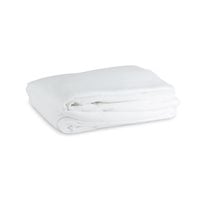Sew-In Interfacing for Garments
Sew-In Interfacing For Garments, Tailoring, Heat-Sensitive Fabrics, And More.Achieve the perfect weight and feel in your garments using Sew-In Interfacing from WAWAK Sewing Supplies. These non-fusible interfacing fabrics have no adhesive and can be sewn directly to your chosen material. Because they don’t require heat to adhere, Sew-In Interfacings are the ideal option for heat-sensitive fabrics. They're also great for projects where a more natural drape is desirable; compared to Fusible Interfacings, Sew-In Interfacings tend to follow more closely with a fabric’s natural drape. This makes Sew-In Interfacings a great choice for both "drapey" garments like skirts or dresses and more structured items like suits and jackets where a more natural fit and movement are desired. Choose from several styles of Sew-In Interfacing, including all-purpose non-woven interfacing, hair canvas for tailored apparel, and more. |
Frequently Asked Questions About Sew-In Interfacing
What are the advantages to sew-in interfacing?Because it doesn't require heat, one advantage of sew-in interfacing is that it can be applied to heat-sensitive or delicate fabrics that can't be ironed. Sew-in interfacing also tends to drape more naturally than fusible interfacing, adding extra body to the fabric without changing the way it moves and drapes too much. Sew-in interfacing is often a better option than fusible interfacing for loosely-woven, very lightweight, or sheer fabrics, or creating a "flowy" or draped look.
How do you sew in interfacing?Cut the interfacing to match the fabric piece you want to interface, then lay the interfacing on the wrong side of your fabric. Sew the fabric and interfacing together by hand or machine stitching along the perimeter of the fabric edge within your seam allowance. Trim away the excess interfacing, if desired. Now your fabric is interfaced and ready to use! If you don't like the look of stitching on the interfacing, you can use a basting stitch and remove it after your pattern pieces are sewn together.
What is the difference between sew-in interfacing and fusible interfacing?Fusible interfacing has a heat-activated adhesive, so it can be attached to fabrics by ironing. Sew-in interfacing, on the other hand, contains no adhesive and can be sewn directly to the fabric instead. |














